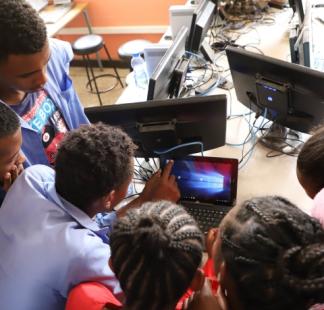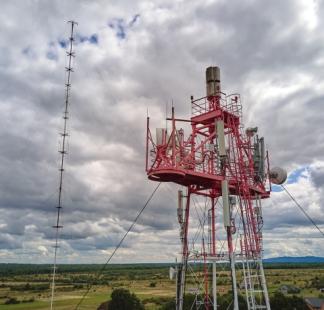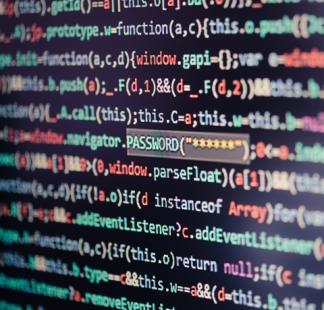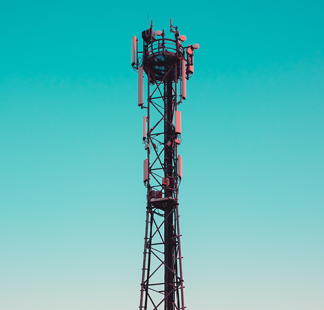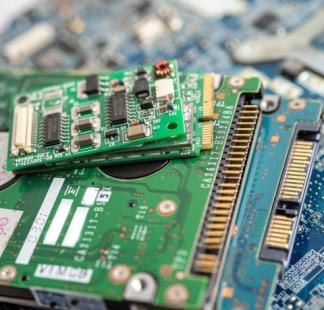- Sylwester Laskowski
- Toni Janevski
- Célia Pellet
Intermediate
- Bank transfer
Event Organizer(s)

Description
This course focuses on technical, business and regulatory aspects of 5G mobile networks. It includes mobile broadband evolution, and LTE-Advanced-Pro as transition of 4G towards 5G mobile networks. It covers 5G network architecture, which is based on network slicing approach, 5G New Radio (NR) and 5G Next Generation core with network functions and software based architecture. The course covers all service types in 5G mobile networks and their characteristics and use cases, including enhanced Mobile Broadband (eMBB), massive Machine Types Communication (mMTC) and Ultra Reliable Low Latency Communications (URLLC). For massive number of devices is required use of IPv6 in 5G, while large variety of services introduces extensions of mobile QoS frameworks with new QoS Class Identifiers and novel approaches for per-flow Quality of Service (QoS) support needed for mobile critical services. Finally, the course also focuses on business aspects of 5G services and applications in different verticals, as well as 5G/IMT spectrum management and regulation including low, mid, and high bands for IMT-2020/5G.
This course is targeted at managers, engineers and employees from regulators, government organizations, telecommunication companies and academia, who are interested in understanding, implementation, and regulation of technical, business, and regulatory aspects of 5G networks, including technologies, standardization, regulation, and content. Other institutions and individuals that are dedicated in building their capacity related to technical, business and regulatory aspects of 5G network are also welcome to participate.
No specific prerequisites in terms of knowledge or qualifications are required for the intended target population.
At the end of the training, the participant should have gained knowledge about the key aspects of:
- Mobile broadband evolution
- LTE-Advanced-Pro: transition from 4G toward 5G mobile networks
- 5G network architecture: network slicing
- 5G New Radio access
- 5G Next Generation core network
- 5G services: mobile ultra-broadband and ultra-reliable low latency services
- Massive Internet of Things (IoT) and IPv6 in 5G
- 5G Quality of Service (QoS)
- Business aspects of 5G networks and services
- 5G/IMT spectrum management and regulation
This course will be delivered using instructor-led online learning. The course methodology will be as follows:
- Each day from 12 to 19 May 2025 there will be made available two recorded video lectures. In total, there are 10 video lectures during the course.
- Course forum, asynchronous, will be organized based on discussion topics raised by the instructor on a daily basis, from Course Day 1 to Course Day 5, which will cover the course material on the given day. Also, participant responses will be asynchronous, keeping in mind the different time zones and daily commitments of participants from different countries around the world.
- General discussion forum, asynchronous, will be provided for participants to ask their own questions which can be answered by the instructor and other participants.
- Final Quiz test will be assigned on the last day of the course, 19 May 2025.
- All announcements for all events (lectures, quiz and forum) will be given in a timely manner (prior to the event) by the course tutor.
The evaluation of the participants will be based on 60% from the Final Quiz and 40% from the answers given in the course forum on the raised discussion topics on daily basis by the tutor, thus reflecting both the quantity and the quality of time spent on the course.
Participation in the course forum is mandatory in order to access the Final Quiz.
The Final Quiz will be open from 00:00 hours on Monday (19 May 2025) according to the GMT+1 time, and will remain open for 30 hours after opening, so each participant can choose the most convenient time to solve it. However, after the start of the attempt the Quiz should be completed in 90 minutes. The Final Quiz contributes with 60% in the total grade.
The course is completed successfully with a total grade of 70% or higher. The grading will be completed by the course tutor after the course is fully completed.
Each fully registered participant who successfully completes the course with a total grade of 70% or higher will receive an ITU Certificate for this course.
The ITU certificates will be given to participants via the ITU Academy platform after completion of the course reporting and processing within the ITU.
Lecture 1. Mobile broadband evolution & Lecture 2. LTE-Advanced-Pro: transition from 4G toward 5G mobile networks
Outline, discuss, use, analyze, design and evaluate the following topics using technical, business and regulatory aspects:
- Mobile generations in the 21st century
- ITU's IMT-Advanced: the 4G umbrella
- 4G standard by 3GPP: LTE/LTE-Advanced
- LTE-Advanced radio access: Carrier Aggregation
- E-UTRAN and Evolved Packet Core (EPC)
- LTE protocol stack: User Plane and Control Plane
- LTE bearers, mobility and location management
- IP Multimedia Subsystem (IMS)
- IMT spectrum (4G)
- LTE-Advanced Pro essential services
- LTE-Advanced Pro carrier aggregation
- LTE in unlicensed bands
- Massive MIMO
- Cellular Internet of Things (IoT)
- Emergency services and public safety
- Vehicle-to-anything (V2X)
- Multi-access Edge Computing (MEC)
- LTE-Advanced Pro for IoT devices
Lecture 3. 5G network architecture: network slicing & Lecture 4. 5G New Radio access
Outline, discuss, use, analyze, design and evaluate the following topics using technical, business and regulatory aspects:
- IMT-2020 – ITU framework for 5G
- IMT-2020/5G vs. IMT-Advanced/4G requirements
- Usage scenarios for IMT-2020/5G
- Software Defined Networking (SDN)
- Network Functions Virtualization (NFV)
- Network slicing in IMT-2020/5G
- Use case - 5G eMBB network slice requirements
- Design considerations for the IMT-2020/5G network
- 5G end-to-end network slicing
- 5G New Radio (NR)
- Numerology in LTE and 5G New Radio
- 5G NR (New Radio) frame structure
- 5G Radio Access Network (RAN) topologies
- Separation of Control Plane (CP) and User Plane (UP)
- Standalone vs. Non-Standalone 5G RAN
- 4G to 5G transition strategy
- 5G millimeter waves considerations
- 5G Fixed Wireless Access (FWA)
Lecture 5. 5G Next Generation core network & Lecture 6. 5G services: mobile ultra-broadband and ultra-reliable low latency services
Outline, discuss, use, analyze, design and evaluate the following topics using technical, business and regulatory aspects:
- Core network evolution
- 5G core network architecture and protocols
- 5G core network slicing
- Service Based Architecture (SBA) in 5G core
- Drivers for traffic increase in 5G era
- Voice and data services in 5G/IMT-2020
- Massive Internet of Things and Machine-to-Machine applications
- Ultra-reliable and low latency applications
- Packet Switched Streaming in 5G
- VR 360◦ video streaming in 5G
- Voice over NR (VoNR)
- 5G with EPC NSA (Non-Stand-Alone) vs. 5G with 5GC (5G Core)
- EPS Fall-Back from 5G, dual registration approach
- User Generated Content (UGC)
- 5G mobile operators vs. OTT providers
- 4G/5G eMBMS (mobile multicast and broadcast)
- Vertical URLLC services
- 5G performance requirements for low-latency and high-reliability scenarios
- Economic impact of 5G services
Lecture 7. Massive Internet of Things (IoT) and IPv6 in 5G & Lecture 8. 5G Quality of Service (QoS)
Outline, discuss, use, analyze, design and evaluate the following topics using technical, business and regulatory aspects:
- Internet of Things (IoT) and Web of Things (WoT) via mobile Internet access
- Mobile IoT vs. Massive and Critical IoT
- Mobile network API in 5G
- Relation between IoT, M2M and Big Data
- Use case: V2X through different slices
- Artificial Intelligence (AI) / Machine Learning (ML) for 5G
- 5G architecture based on IPv6
- Main QoS parameters in EPS
- QoS Class Identifiers (QCI) for LTE-Advanced-Pro
- QoS mechanisms in 3GPP networks
- 5G QoS framework and model
- 5G QoS profile
- Additional QoS parameters in 5G
- Different 5G slices for different QoS
- 5G session and service continuity
- ITU minimum QoS requirements
- 5G mobility and QoS
Lecture 9. Business aspects of 5G networks and services & Lecture 10. 5G/IMT spectrum management and regulation
Outline, discuss, use, analyze, design and evaluate the following topics using technical, business and regulatory aspects:
- 5G business start point
- 5G investments and total cost of 5G ownership
- Fiber for 5G
- 5G and smartphones
- 5G and IoT business aspects
- Automotive industry and 5G IoT
- Mobile business with 5G network slicing
- 5G and individual customers
- 5G as unified ultra-broadband Internet worldwide
- 5G and wholesale business models
- 5G spectrum bands and their use cases
- 3GPP technologies in unlicensed bands
- Frequency planning for small cells deployments in 5G
- 5G/IMT-2020 spectrum bands targets
- Step by step spectrum transition from 4G to 5G
- Definition of Frequency Ranges (FRs) for 5G New Radio
- Channel bandwidth per operating NR band (below 6 GHz and above 6 GHz)
- Coverage, capacity and latency characteristics of IMT-2020/5G bands
- 5G investments vs. 5G spectrum prices

